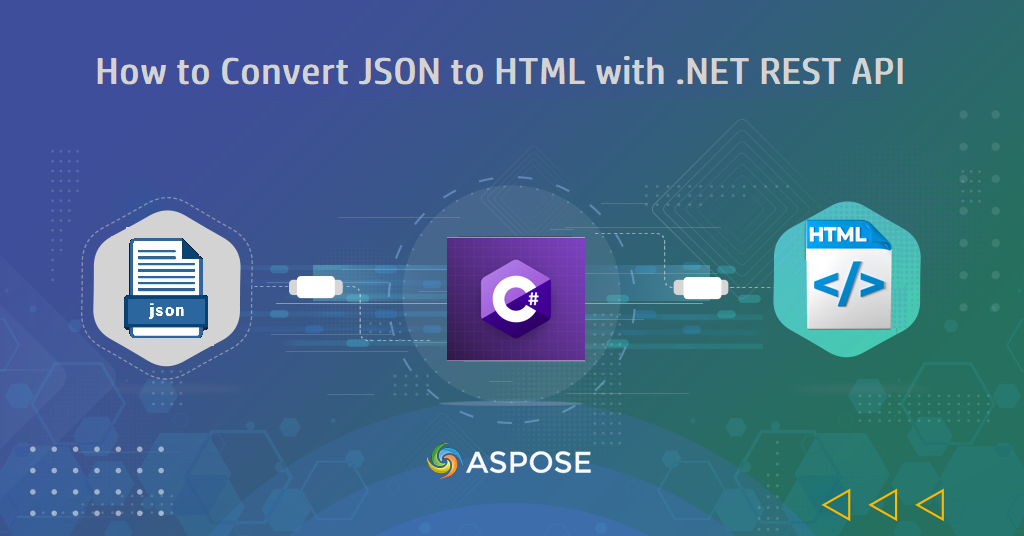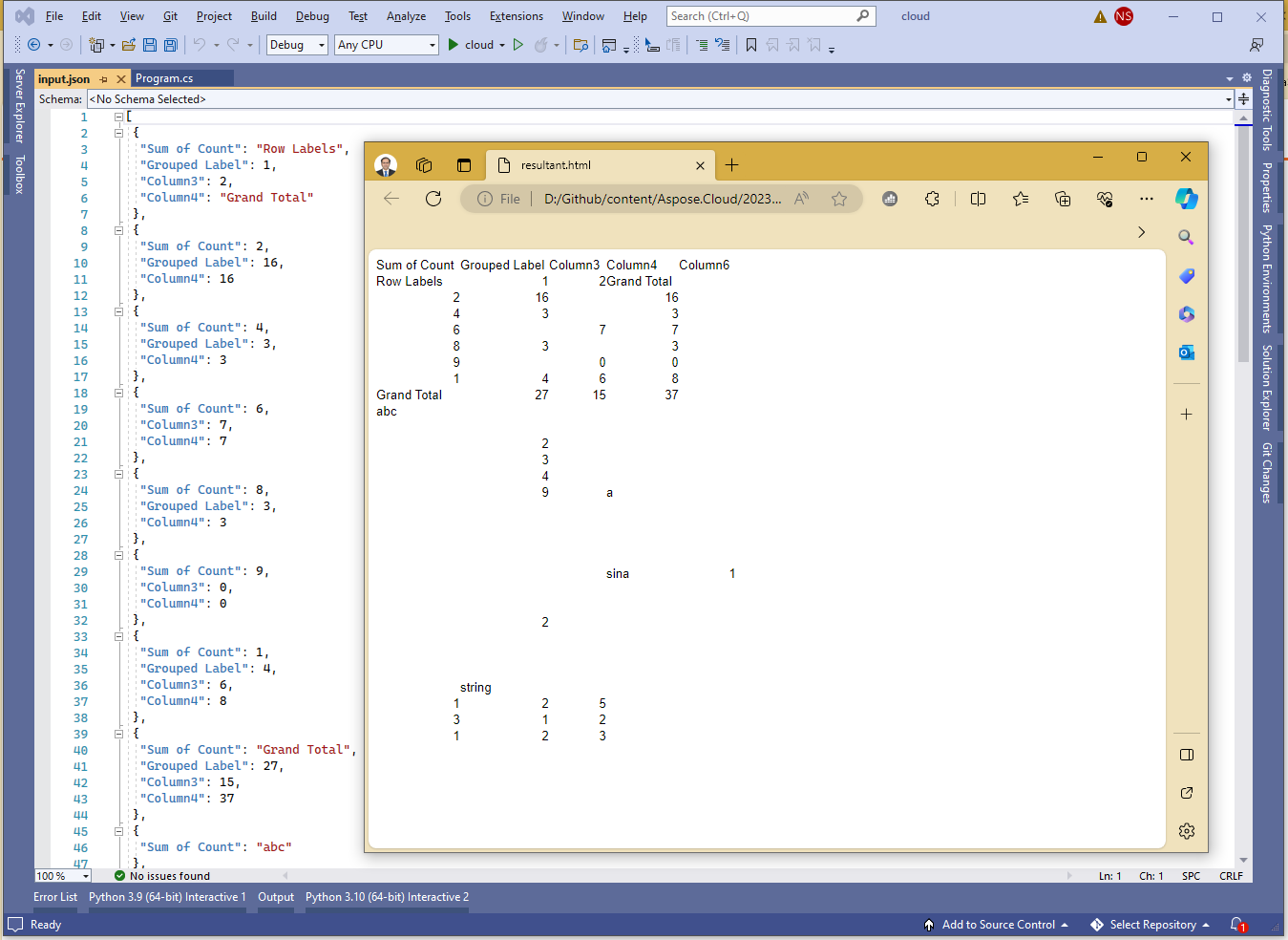
How to convert JSON to HTML using .NET Cloud SDK.
In an ever-evolving landscape of web development, the need for dynamic and user-friendly data presentation has become paramount. As data-driven applications continue to proliferate, the ability to seamlessly convert JSON to HTML emerges as a crucial feature. Therefore, our .NET REST API provides a robust solution to this imperative requirement, empowering developers to effortlessly translate JSON data into HTML structures. Now, in this comprehensive guide, we are going to delve into the necessity and practical implementation of ‘JSON to HTML’ conversion using the .NET REST API.
- .NET Cloud SDK for JSON to HTML Conversion
- Convert JSON to HTML in C# .NET
- JSON to HTML Conversion using cURL Commands
.NET Cloud SDK for JSON to HTML Conversion
Aspose.Cells Cloud SDK for .NET is an amazing API offering powerful features for dynamic data manipulation within the Excel files. It allows you to programmatically create Excel workbooks and import JSON data into worksheets, that pave a stage for dynamic data visualization. The generated Excel content can then be further exported to HTML, offering a practical workaround for integrating JSON data into HTML structures. Beyond this, the Aspose.Cells Cloud SDK for .NET excels in a myriad of other capabilities, empowering you with tools to perform extensive Excel file manipulations and hence, this SDK stands as a robust solution for various data-driven scenarios within the .NET ecosystem.
Now, in order to leverage the capabilities of this SDK in .NET application, first we need to search Aspose.Cells-Cloud in NuGet packages manager and click the Add Package button. Secondly, obtain your client credentials from cloud dashboard. If you do not have an existing account, simply create a free account by following the instructions specified in the quick start article.
Convert JSON to HTML in C# .NET
Let’s tap into the JSON to HTML conversion capabilities using C# .NET, so that we can enhance our applications, providing users with interactive and visually appealing experiences.
CellsApi cellsInstance = new CellsApi(clientID, clientSecret);
Firstly, create an object of CellsApi class where we pass client credentials as arguments.
cellsInstance.UploadFile("sourceFile.json", file);
Upload the input JSON file to cloud storage.
cellsInstance.CellsWorkbookGetWorkbook("sourceFile.json", format: "HTML", isAutoFit: true, outPath: resultant_file);
Finally, call the API to convert JSON to HTML. After successful conversion, the resultant HTML will be stored in cloud storage.

A preview of JSON to HTML conversion.
The sample JSON file used in the above example can be downloaded from:
JSON to HTML Conversion using cURL Commands
Opting for Aspose.Cells Cloud and cURL commands for JSON to HTML conversion provides a robust and versatile solution rooted in the strengths of the Aspose.Cells Cloud API. While direct JSON to HTML conversion might not be native, utilizing cURL commands enables the seamless integration of Aspose.Cells Cloud, allowing you to create Excel workbooks dynamically from JSON data. Furthermore, the cURL commands serve as a practical bridge, facilitating the export of Excel content to HTML format.
The first step in this approach is to generate a JWT access token using the following command:
curl -v "https://api.aspose.cloud/connect/token" \
-X POST \
-d "grant_type=client_credentials&client_id=921363a8-b195-426c-85f7-7d458b112383&client_secret=2bf81fca2f3ca1790e405c904b94d233" \
-H "Content-Type: application/x-www-form-urlencoded" \
-H "Accept: application/json"
Now, please execute the following command to transform JSON to HTML format.
curl -v "https://api.aspose.cloud/v3.0/cells/{sourceFile}?format=HTML&isAutoFit=true&onlySaveTable=true&outPath={resultantFile}&checkExcelRestriction=true" \
-X GET \
-H "accept: application/json" \
-H "authorization: Bearer {accessToken}" \
-d {}
Replace sourceFile with the name of input JSON file available in Cloud storage, resultantFile with the name of resultant CSV to be generated and accessToken with a JWT access token generated above.
Conclusion
In conclusion, the process of converting JSON to HTML can be effectively accomplished by leveraging the robust features of Aspose.Cells Cloud, whether through the convenience of the .NET SDK or the flexibility of cURL commands. While the .NET SDK provides a seamless integration into .NET projects and offers a plethora of functionalities for Excel file manipulation, the cURL commands offer a lightweight and scriptable solution for cross-platform compatibility. Both approaches showcase the versatility of Aspose.Cells Cloud, allowing developers to dynamically manage data within Excel workbooks and subsequently export it to HTML format.
Useful Links
Related Articles
We highly recommend visiting the following blogs: